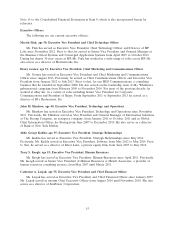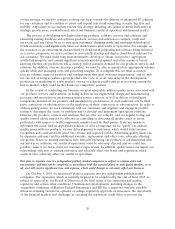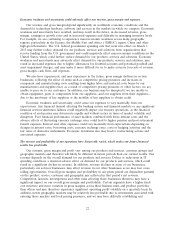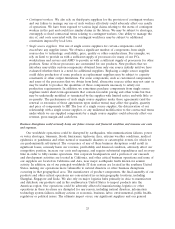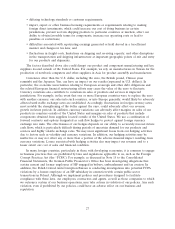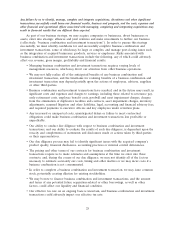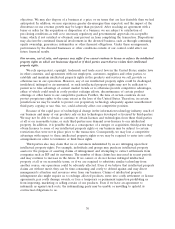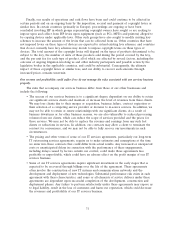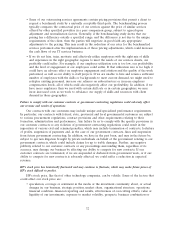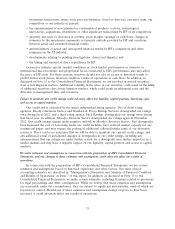HP 2014 Annual Report Download - page 32
Download and view the complete annual report
Please find page 32 of the 2014 HP annual report below. You can navigate through the pages in the report by either clicking on the pages listed below, or by using the keyword search tool below to find specific information within the annual report.of systems, products and services that we offer, the large number of our suppliers and contract
manufacturers that are located around the world, and the long lead times required to manufacture,
assemble and deliver certain components and products, problems could arise in production, planning,
and inventory management that could seriously harm us. In addition, our ongoing efforts to optimize
the efficiency of our supply chain could cause supply disruptions and be more expensive,
time-consuming and resource intensive than expected. Other supplier problems that we could face
include component shortages, excess supply, risks related to the terms of our contracts with suppliers,
risks associated with contingent workers, and risks related to our relationships with single source
suppliers, as described below.
•Shortages. Occasionally we may experience a shortage of, or a delay in receiving, certain
components as a result of strong demand, capacity constraints, supplier financial weaknesses,
inability of suppliers to borrow funds in the credit markets, disputes with suppliers (some of
whom are also customers), disruptions in the operations of component suppliers, other problems
experienced by suppliers or problems faced during the transition to new suppliers. For example,
our PC business relies heavily upon OMs to manufacture its products and is therefore
dependent upon the continuing operations of those OMs to fulfill demand for our PC products.
HP represents a substantial portion of the business of some of these OMs, and any changes to
the nature or volume of business transacted by HP with a particular OM could adversely affect
the operations and financial condition of the OM and lead to shortages or delays in receiving
products from that OM. If shortages or delays persist, the price of certain components may
increase, and we may be exposed to quality issues or the components may not be available at all.
We may not be able to secure enough components at reasonable prices or of acceptable quality
to build products or provide services in a timely manner in the quantities or according to the
specifications needed. Accordingly, our revenue and gross margin could suffer as we could lose
time-sensitive sales, incur additional freight costs or be unable to pass on price increases to our
customers. If we cannot adequately address supply issues, we might have to reengineer some
products or services offerings, which could result in further costs and delays.
•Oversupply. In order to secure components for the provision of products or services, at times we
may make advance payments to suppliers or enter into non-cancelable commitments with
vendors. In addition, we may purchase components strategically in advance of demand to take
advantage of favorable pricing or to address concerns about the availability of future
components. If we fail to anticipate customer demand properly, a temporary oversupply could
result in excess or obsolete components, which could adversely affect our gross margin.
•Contractual terms. As a result of binding price or purchase commitments with vendors, we may
be obligated to purchase components or services at prices that are higher than those available in
the current market and be limited in our ability to respond to changing market conditions. If we
commit to purchasing components or services for prices in excess of the then-current market
price, we may be at a disadvantage to competitors who have access to components or services at
lower prices, our gross margin could suffer, and we could incur additional charges relating to
inventory obsolescence. In addition, many of our competitors obtain products or components
from the same OMs and suppliers that we utilize. Our competitors may obtain better pricing,
more favorable contractual terms and conditions, and more favorable allocations of products and
components during periods of limited supply, and our ability to engage in relationships with
certain OMs and suppliers could be limited. The practice employed by our PC business of
purchasing product components and transferring those components to its OMs may create large
supplier receivables with the OMs that, depending on the financial condition of the OMs, may
create collectibility risks. In addition, certain of our OMs and suppliers may decide to
discontinue conducting business with us. Any of these actions by our competitors, OMs or
suppliers could adversely affect our future results of operations and financial condition.
24



